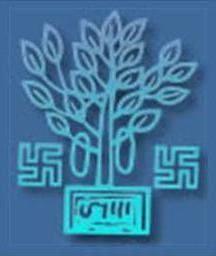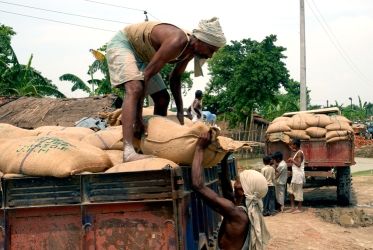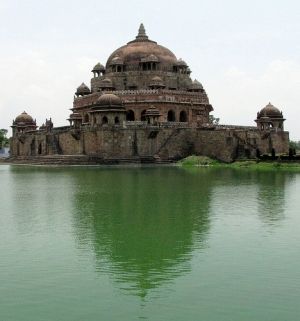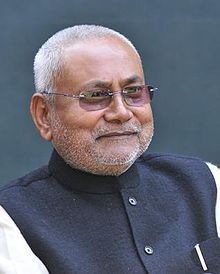
Publisher:
Bonnie King
CONTACT:
Newsroom@Salem-news.com
Advertising:
Adsales@Salem-news.com

~Truth~
~Justice~
~Peace~
TJP
Jan-17-2012 10:00

 TweetFollow @OregonNews
TweetFollow @OregonNews
Starvation deaths in the Indian state of Bihar
Arun Shrivastava Salem-News.comSystems are in place to prevent malnutrition but starvation deaths are being reported from a state that is home to 110 million, and how many deaths remain unreported?
 From: 'Starvation claims five lives in drought-hit Bihar districts'. Courtesy: India Vanguard |
(NEW DELHI, India) - One hundred and fifty persons-men, women and children-have died of hunger in nineteen districts of Bihar in the past five years to 2011. The dead are mainly from the Dalit community.
Some had the ‘red ration card’ with entitlement of 25 kg of rice at highly subsidized rates, yet they could not afford to buy even 50% of the entitlements. The ‘red card’ assures a below-poverty line household just about enough to survive.
Chandu Manjhi
A Dalit and resident of Bankat village of Gaya district, barely 120 kms from Patna, Chandu Manjhi died on 13th February, 2011, leaving behind his wife and two children aged 12 and 8. His total income from manual labor was Rs 800 [about 40 dollars] per month and did not have enough money to purchase even the minimum entitlement of rice for all and remained hungry for eight to ten days on the month, or 3-4 months on the year. Bankat village also has four households with total monthly income of 150 to 200 rupees per month. They each have a starvation death in the family. The story of Murti Devi is more gruesome.
Should people die of starvation?
 Seal of India Bihar state |
Bihar Government runs food grain distribution program [Targeted Public Distribution system, or TPDS], hot mid day meal scheme [MDMS] for school children and free supplementary nutrition scheme under integrated child development services [ICDS] for pre-school children, adolescent girls, pregnant women and nursing mothers. In addition to these, there is income support program [National Rural Employment Guarantee Scheme, or NREGS], which guarantees 100 days of employment annually at minimum wage rate of Rs 144 per day and unemployment allowance. Three social security schemes are also in place-National Maternity Benefit Scheme [NMBS; Rs 1400 per birth], National Old Age Pension Scheme [NOAPS; Rs 200 per month plus 200 from Bihar Government which has never been given to the poor elders]. In case the primary bread earner dies, Rs. 10,000 of cash assistance under National Family Benefit Scheme [NFBS] is an entitlement of a poor household. The National Rural Health Mission [NRHM] seeks to ensure that quality medical care is available at door step of the poor. No one knows what NRHM is, not even the doctors. Not many poor illiterate know that 100 kgs of food grain is allotted to each head of the Village Council to be given to any poor household in emergency.
The systems are in place to prevent malnutrition but starvation deaths are being reported from a state that is home to 110 million. How many deaths remain unreported?
Had these programs been properly implemented, a poor household would earn at least Rs 14,400 per year or 1200 rupees per month guaranteed by law plus whatever additionally. That household would be entitled to subsidized ration of 7 kg per person for Rs. 6.80 per kg or wheat for Rs. 5.20 per month. It means that each household of five persons could easily afford to buy his/her entitlement for Rs 250 per month in rural Bihar plus other food items to lead a healthy life. Additionally he/she would get free medical care at the village Sub-centre or dispensary and every household would have a medical assistant at door step including ambulance service if required. Budgetary provisions have been made, and Indian taxpayers are paying for these services for the poor.
 |
 Supreme Court at Patna |
However, a recent report prepared by Advisors to the Supreme Court Commissioners at Patna, states that none of these programs is working satisfactorily. [1] The Commissioners are NC Saxena and Harsh Mander.
In respect of PDS, the allocation to each household is 25 kg against the norm of 35 kg [7 kg per person per month] and according to the report about 40% of below poverty line households have been excluded. Same is the story with Antyodaya Anna Yojana [AAY], essentially distribution of minimum food grains for the poorest of the poor. Since 13.67 million households are estimated to be below poverty line [BPL], about 5.5 million households are outside the entitlements; without a BPL or Antyodaya identification card they can’t avail of NOAPS, NMBS and NFBS too. NREGS is also in a mess depriving millions of guaranteed income and unemployment allowance.
There is another major problem, not only in Bihar but across India. The Constitution 73rd Amendment seeks to establish a powerful local self government. Eighteen years later, just about 5000 elite officers control the power structure and have managed to undermine the participative, decentralized governance across India and that could not have happened without the complicity of State and Central level politicians. The village, block and district councils are virtually implementing bodies of government schemes, working under the direction of a bureaucracy established by the British colonial rulers in the 19th Century; decisions of elected people to the local self government can be neutralized by unelected officials.
The people can’t even demand the Constitutional entitlements because the bureaucracy acts as the wall and controlling the bureaucracy is Nitish, the Chief Minister of Bihar. Four departments and two electoral systems of people’s power exist to prevent starvation deaths yet common folks starve to death. Perhaps Kerala is the only state that has properly implemented the provisions of the 73rd Amendment; other states are playing footsies…with the Constitution and people’s lives but Bihar excels.
Reporting of starvation deaths
Reporting and verification of starvation death is left entirely to the civil society. Concerned citizens report to the local media representatives who, in turn, file their report. No way of knowing how many were filed and how many were actually reported by the media. Sometimes citizens also send their report directly to the Advisors’ office. The advisors’ office then undertakes a verification visit to the town or village where the death has occurred.
Piecing together of evidence
 Scene in Bihar. Courtesy: indiabuzzing.com |
Note that starvation death does not occur within a short time. It takes years for a person deprived of proper food and nutrition to come to a stage when normal physiological functions collapse causing vital organ failure causing death. The investigation is based on collection of detailed circumstantial evidences of sustained deprivation of food and other entitlements. To ascertain that, the investigating teams meet with the community leaders, village headman, talk to the neighbors, and the surviving members of the household. They go to the homes of the dead to see what assets they have, how they live, where they work, how much they earn and cross check how much of the subsidized food they can buy. Most of these can be documented and this way a detailed case file is prepared.
During the reference period, the media has reported about 150 deaths; I saw the details of 96 out of which 24 [25%] have been verified by the Advisors office. The investigations were carried out by a team led by Rupesh and included Sanjay Sinha, Ritwij Kumar, Santosh Jha, Anish Ankur, Vineet Kumar, Karu ji, Siddhartha and Akhtar Hussain. A young lady Anshu, 21, has also investigated starvation deaths. Discussion with some of them shows that they can truthfully document the evidences.
The deaths are concentrated in flood and drought-prone areas and Bihar has both and billions of rupees have been spent on flood and drought control without respite for the people. This is failure of long term planning process.
Persons in all age groups have died: from under five children to 80 year old, entirely avoidable loss of life. Data on the extent of malnutrition shows that women and children in all districts have a high incidence of malnutrition and politicians and government officials know that there is inter-generational cycle of malnutrition that would destroy the physical and mental ability of the population. Have they been vote to perpetuate a mass of lowly, underfed, mentally challenged population who would work as their servants?
Major systemic problems have been identified but it seems that Nitish’s Government has chosen to sleep over them.
The State government of ‘Shining Bihar’ can’t accept starvation deaths
 Courtesy: Kanad Sanyal:flickriver.com |
How can they, when a Supreme Court directive-that ‘should any starvation death occur, the state government shall be held directly responsible’- hangs like Damocles’ sword?
Therefore, it is virtually impossible to pin the blame on the state government. There are specifically two reasons why starvation deaths can’t be proven in a law court.
- Usually the body is cremated the same day, often by the police. Post mortem facility is not available in rural and remote rural areas. Autopsy would reveal interstitial oedema of heart and 35-40% loss of body weight, both conclusive signs of starvation death. Among children shriveled skin, maramus, shriveled temporalis muscle, and swelling of the feet are sure signs.[2]
- Government doctors will not certify a death by starvation; their career will be ruined. Therefore, even if the death occurred in a hospital, doctors would not specify starvation as the cause of mortality; instead they’d normally enter death by heart failure or respiratory failure. Note that all deaths eventually occur from heart failure or respiratory failure but the Bihar Government continues to fool the world.
- Therefore, while it is medically possible to certify that a death occurred from starvation, it is extremely difficult to establish the fact in a law court. A person who has remained hungry for four months on the year for years can get any infectious disease like TB, gastroenteritis, severe cough and cold because the immune system is on the brink of collapse lading to morbidity and finally to mortality. Would a doctor enter in the death certificate that the death occurred because of economic deprivation and hunger? Not to my knowledge. And that also means complete collapse of clinical governance in India that has wider ramifications.
Should any doctor even dare say that it did, given the judgment of the Supreme Court, it’d become a medico-legal case, exactly as if a family member was deprived of food and allowed to die of starvation. A household can be charged for manslaughter for causing the death by starvation of a family member but not Bihar state.
 |
The state can kill at will and it does.
Nitish is a master media manipulator
 India's Nitish Kumar |
How many journalists in the mainstream media have reported this as it should be? Hindustan Times, Aaj, Sahara, Prabhat Khabar, Jagaran, all have reported but in the local edition and the context is missing; it has not hit national or international front page yet. Just a few lines for the bereaved family, the loss of a child or mother or the sole bread winner. The context is that there is total collapse of all national programs that have been carefully designed to ensure food and nutritional security, access to health, and decent livable wage; common citizens are from nineteen districts have reported starvation deaths. This is improper reporting and highly irresponsible behavior of an elected government. Should India and Bihar keep shining?
Recall that during the British colonial period, 79 million Indians died of hunger and starvation. The British ruled ruthlessly quelling any law and order problem while people died. Nitish has adopted that dictum. He has given Bihar a relatively safe society, safe for the chatteratti. But he has adopted a path of decimating the poor. Chandu Manjhi is for starters.
Wait for another 5-10 years and all the ‘useless eaters’ on whom tax-payers’ money goes down the sink would have been cremated, no one even knowing why.
Nitish and Mangla Rai, the latter like his mentor Swaminathan should go down as India’s most corrupt scientist fit for being tried for treason, are setting an agenda that would destroy Bihar’s 10 millennia old civilization. While Mangla Rai deposited millions of India’s farmer saved seeds in Svalbard, Norway, in what is known as the ‘SEED VAULT,’[3][4][5] Nitish has feted out an organic farmer in Darbhanga but has he ordered the arrest of criminals who planted genetically engineered maize by his village farm? NO! The British starved Biharies for 15 decades and destroyed the physical quality of Bihar’s people; Laloo Yadav destroyed Bihar’s economy; Nitish and Mangla Rai will destroy a civilization that gave the world much to contemplate, being the birth place of Buddhism and Jainism. The Sikhs know the importance of Bihar too being the birth place of Shri Guru Govind Singh ji.
Starving millions in Motihari brought Mohandas Karamchand Gandhi to Bihar and then started the movement for independence. History is repeating itself, there is no Gandhi in sight but the politicians, bureaucrats and spurious scientists keep playing their colonial tunes.
References:
- Status of implementation of food schemes in Bihar, 2010-11
- Discussions with Dr S.N. Arya, Former Professor of Medicine-PMCH, eminent citizen of Patna and winner of the highest national civilian award Padam Shri.
- http://www.partitionofindia.
com/_archive/00000d33.htm - http://globalresearch.ca/
index.php?context=va&aid=23503 - http://www.wired.com/rawfile/
tag/svalbard-seed-bank/
___________________________________
 Arun Shrivastava is Salem-News.com's South Asia Correspondent. An accredited management consultant, Arun is also a highly experienced researcher and writer. He studied in India and England and returned to India in 1989, after a brief stint as senior officer with Economic Development Unit of Birmingham (UK). From 1989 to 1994, he taught Strategic Management and Long Range Planning to MBA students at International Management Institute in Delhi.
Arun Shrivastava is Salem-News.com's South Asia Correspondent. An accredited management consultant, Arun is also a highly experienced researcher and writer. He studied in India and England and returned to India in 1989, after a brief stint as senior officer with Economic Development Unit of Birmingham (UK). From 1989 to 1994, he taught Strategic Management and Long Range Planning to MBA students at International Management Institute in Delhi.
About twenty years ago he founded two institutions, one for consulting and another for doing sponsored research work; today both are known for excellence. Since the events of 9/11, he has devoted much of his time to researching NWO issues. Arun also moderates International Human Rights Organizations’ discussion group.
Salem-News.com is very pleased that Arun Shrivastava chose to join our dynamic team which has been paying increasing attention to problems taking place in India. He is Salem-News.com's 94th writer and his presence allows us to better cover important events in an increasingly interconnected world community.
You can send an email to Arun Shrivastava at this address: arunshrivastava.1951@gmail.com
 |
 End Israeli apartheid |
Articles for January 16, 2012 | Articles for January 17, 2012 | Articles for January 18, 2012





Salem-News.com:
Terms of Service | Privacy Policy
All comments and messages are approved by people and self promotional links or unacceptable comments are denied.
[Return to Top]
©2025 Salem-News.com. All opinions expressed in this article are those of the author and do not necessarily reflect those of Salem-News.com.